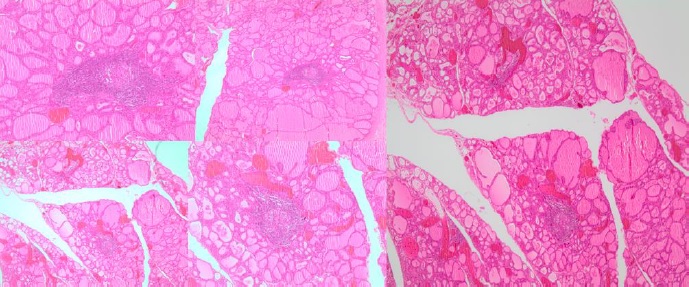Abstract
The present article is the report of the first Ex Utero Intrapartum procedure (EXIT), carried out at the San Ignacio University Hospital, by an interdisciplinary group (anesthesiologist, pediatric otolaryngologist, neonatologist and obstetrician).
The need for an EXIT strategy is rare. Its objective is to secure the newborn's airway during childbirth when there is a risk of airway obstruction, that may be caused by secondary compression from cervical or mediastinal masses, congenital craniofacial or airway malformations. The aim of the surgery is to reduce the risk of mortality of the newborn.
We present a 33 years old patient with a gestational age of 38 weeks and a diagnosis of cervical cystic lesion in the fetus by gestational week 25.
The delivery was performed by securing the neonate’s airway with orotracheal intubation. In this case, a vascular macrocystic lymphatic malformation was confirmed.
The objective of the article is to emphasize that proper planning and prenatal diagnosis of cervical malformations significantly improves the patient's prognosis, both in the short and the long term results.
1. Dighe MK, Peterson SE, Dubinsky TJ, Perkins J, Cheng E. EXIT procedure: technique and indications with prenatal imaging parameters for assessment of airway patency. Radiographics. 2011;31(2):511-26. http://doi.org/10.1148/rg.312105108
2. Garcia P, Olutoye OO, Ivey RT, Olutoye OA. Case scenario: anesthesia for maternal-fetal surgery. The ex utero intrapartum therapy (EXIT) procedure. Anesthesiology. 2011;114(6):1446-52.
3. Oliveira E, Pereira P, Retroz C, Mártires E. Anesthesia for EXIT procedure (ex utero intrapartum treatment) in congenital cervical malformation-a challenge to the anesthesiologist. Braz J Anesthesiol. 2015;65(6):529-33.
4. Sviggum HP, Kodali BS. Maternal anesthesia for fetal surgery. Clin Perinatol. 2013;40(3):413-27.
5. Marwan A, Crombleholme TM. The EXIT procedure: principles, pitfalls, and progress. Semin Pediatr Surg. 2006;15(2):107-15.
6. George RB, Melnick AH, Rose EC, Habib AS. Case series: Combined spinal epidural anesthesia for Cesarean delivery and ex utero intrapartum treatment procedure. Can J Anesth. 2007;54(3):218-22.
7. Laje P, Johnson MP, Howell LJ, Bebbington MW, Hedrick HL, Flake AW, et al. Ex utero intrapartum treatment in the management of giant cervical teratomas. J Pediatr Surg. 2012;47(6):1208-16. https://doi.org/10.1016/j.jpedsurg.2012.03.027
8. Hedrick HL. Ex utero intrapartum therapy. Semin Pediatr Surg. 2003;10:190-5.
9. Hubbard AM, Crombleholme TM, Adzick NS. Prenatal MRI evaluation of giant neck masses in preparation for the fetal EXIT procedure. Am J Perinatol. 1998;15:253-7.
10. Cox J, Barlett E, Lee EI. Vascular malformations: a review. Semin Plast Surg. 2014;28(2):25-63.
11. Gresham TR, Friedman AB. Hemangiomas and vascular malformations: current theory and management. Int J Pediatr. 2012:645678. https://doi.org/10.1155/2012/645678
12. Ospina J, Wuesthoff C, Eslava S. EXIT: tratamiento exútero intraparto. Reporte de caso y revisión de la literatura. Rev Colomb Obstet Ginecol. 2012;63(2):155-62.
This journal is registered under a Creative Commons Attribution 4.0 International Public License. Thus, this work may be reproduced, distributed, and publicly shared in digital format, as long as the names of the authors and Pontificia Universidad Javeriana are acknowledged. Others are allowed to quote, adapt, transform, auto-archive, republish, and create based on this material, for any purpose (even commercial ones), provided the authorship is duly acknowledged, a link to the original work is provided, and it is specified if changes have been made. Pontificia Universidad Javeriana does not hold the rights of published works and the authors are solely responsible for the contents of their works; they keep the moral, intellectual, privacy, and publicity rights.
Approving the intervention of the work (review, copy-editing, translation, layout) and the following outreach, are granted through an use license and not through an assignment of rights. This means the journal and Pontificia Universidad Javeriana cannot be held responsible for any ethical malpractice by the authors. As a consequence of the protection granted by the use license, the journal is not required to publish recantations or modify information already published, unless the errata stems from the editorial management process. Publishing contents in this journal does not generate royalties for contributors.



